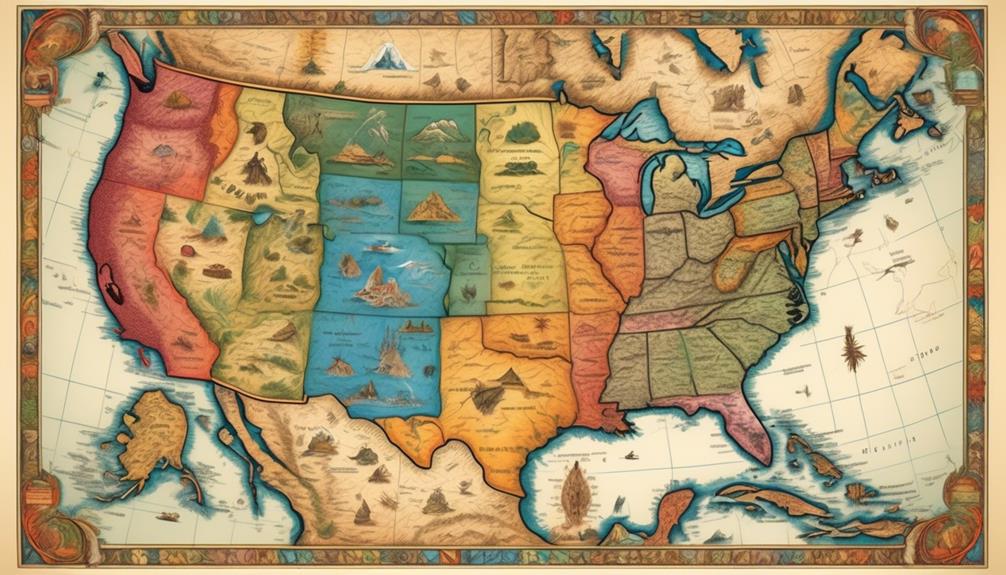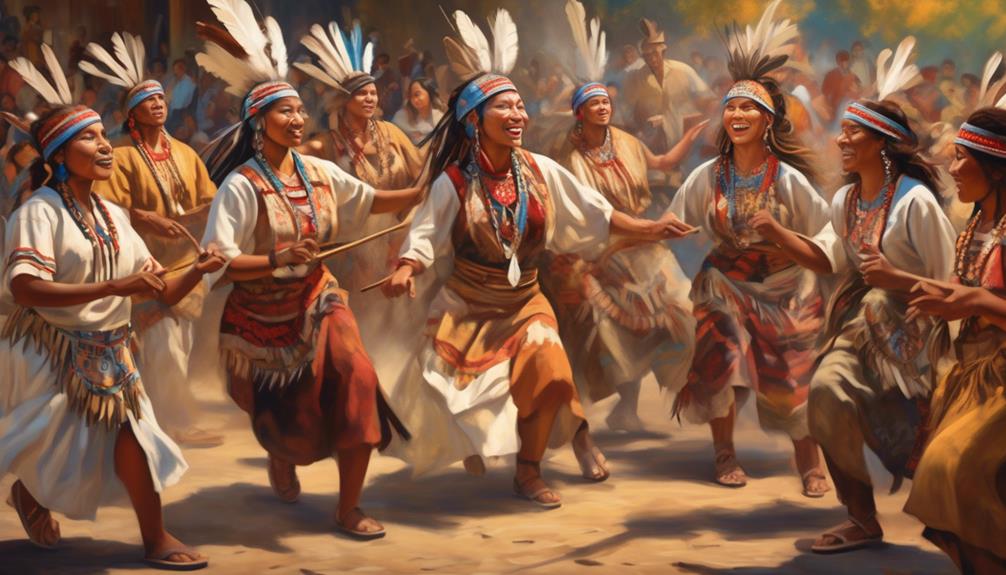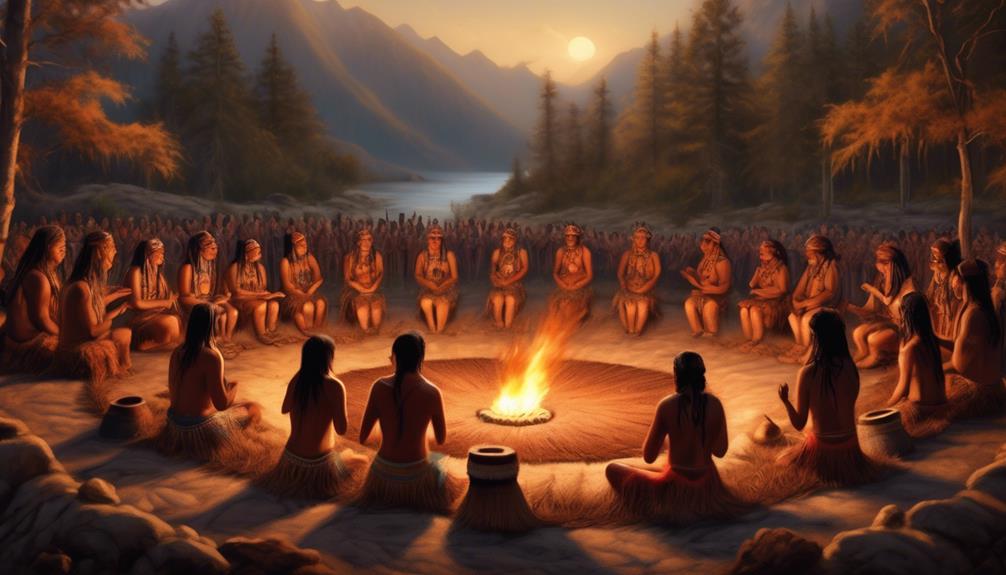Have you ever considered the indigenous people who originally inhabited the land you currently reside on? This question often goes unasked, but it is important to uncover the answer in order to fully understand our connection to the land and the Native tribes who have cared for it for generations.
As we go about our daily lives, it's easy to overlook the history and significance of the territories we inhabit, but uncovering this knowledge can lead to a deeper appreciation and respect for the land.
Understanding the Indigenous lands we are on is not only a way to honor the past but also a step towards building meaningful relationships with Indigenous communities today.
Key Takeaways
- Recognizing and acknowledging the cultural significance of Indigenous territories.
- Understanding the historical impact of colonization on Indigenous lands and peoples.
- Empowering Indigenous communities to have a voice in decisions affecting their lands and resources.
- Dismantling colonial structures and fostering genuine partnerships based on mutual respect and reciprocity.
Understanding Indigenous Territory Acknowledgment
Understanding Indigenous Territory Acknowledgment requires a critical examination of the historical and ongoing impact of colonization on Indigenous lands and peoples. It's crucial to recognize the cultural significance of Indigenous territories, which have been deeply intertwined with their identity, traditions, and spirituality for centuries.
The historical context of colonization has resulted in severe and lasting colonial impacts, including forced displacement, cultural erasure, and the exploitation of natural resources. This has led to the marginalization and oppression of Indigenous communities, perpetuating systemic inequalities that persist to this day.
Efforts towards ongoing recognition of Indigenous territories are essential in rectifying past injustices and promoting decolonization. It involves acknowledging the traditional custodians of the land and respecting their inherent rights and sovereignty. However, mere acknowledgment without meaningful action and support for Indigenous self-determination is insufficient.
True recognition entails active engagement with Indigenous communities, centering their voices and perspectives in decision-making processes that affect their lands and resources. Ultimately, understanding Indigenous Territory Acknowledgment necessitates a commitment to dismantling colonial structures and fostering genuine partnerships based on mutual respect and reciprocity.
Importance of Land Acknowledgment

Recognizing the enduring significance of Indigenous lands through land acknowledgment is a critical step towards dismantling colonial structures and fostering genuine partnerships based on mutual respect and reciprocity. The practice of acknowledging Indigenous territories is not merely a symbolic gesture but an essential act of recognizing the cultural significance and historical context of these lands. It requires an understanding of the ongoing impact of colonialism and the active involvement of Indigenous communities in shaping their own narratives and futures.
| Cultural Significance | Historical Context | Ongoing Impact | Community Involvement |
|---|---|---|---|
| Acknowledges the deep spiritual and cultural connections Indigenous peoples have with the land. | Recognizes the legacy of forced displacement, loss of autonomy, and cultural erasure experienced by Indigenous communities. | Raises awareness about the ongoing challenges Indigenous peoples face in protecting their lands and maintaining their traditional practices. | Empowers Indigenous communities to have a voice in decisions affecting their lands and resources. |
How to Identify Indigenous Lands
Identifying Indigenous lands requires a comprehensive understanding of historical treaties, ancestral territories, and traditional land use practices, as well as active engagement with Indigenous communities to honor their inherent sovereignty and stewardship of the land.
To identify Indigenous lands, we must:
- Researching history: Delve into historical records, oral histories, and archaeological evidence to understand the original boundaries and territories of Indigenous communities. This involves critically examining colonial documents and acknowledging the biases and gaps in historical records to reconstruct a more accurate picture of Indigenous land.
- Consulting with Indigenous communities: Actively engage with Indigenous peoples to understand their perspectives on land ownership, use, and boundaries. This requires building respectful and reciprocal relationships with Indigenous communities, acknowledging their expertise as the original stewards of the land.
- Identifying boundaries: Recognize that Indigenous land isn't confined to physical boundaries, but encompasses cultural, spiritual, and ecological dimensions. It's crucial to respect and understand the interconnectedness of Indigenous territories and the significance of sacred sites, waterways, and natural resources.
Resources for Finding Indigenous Territories

To effectively locate Indigenous territories, we must prioritize utilizing resources that center Indigenous perspectives, knowledge, and sovereignty. This means acknowledging the historical and ongoing impacts of colonization, respecting tribal sovereignty, and supporting cultural preservation efforts. When seeking out information about Indigenous lands, it is crucial to turn to sources that are rooted in Indigenous knowledge and experiences. Below, we provide a selection of resources that can aid in identifying Indigenous territories, while also respecting the sovereignty and cultural preservation of Indigenous communities.
| Resource | Description | Benefits |
|---|---|---|
| Native Land | Interactive map highlighting Indigenous territories | Provides visual representation of Indigenous lands |
| Tribal Government Websites | Official sources for information on tribal territories | Offers direct insights from tribal authorities |
| Indigenous-Led Organizations | Advocacy groups working on land recognition | Supports Indigenous-led efforts for land justice |
Taking Action to Honor Indigenous Lands
Paying homage to Indigenous lands demands an unwavering commitment to centering Indigenous knowledge and sovereignty, and actively engaging with the historical ramifications of colonization. To honor Indigenous lands, we must take concrete actions that prioritize land recognition, cultural preservation, and community engagement while acknowledging the deep-seated impact of colonialism.
- Land Recognition and Respect: Start by acknowledging the specific Indigenous territories on which you live, work, or visit. Show respect by learning about the history, culture, and traditions of the Indigenous peoples who've stewarded the land for generations.
- Cultural Preservation: Support initiatives that promote the preservation of Indigenous languages, traditions, and knowledge systems. This can involve participating in cultural events, amplifying Indigenous voices, and advocating for the protection of sacred sites.
- Community Engagement and Historical Research: Engage with local Indigenous communities to understand their needs and priorities. Support historical research that uncovers the impact of colonization on Indigenous lands and contributes to restorative justice efforts.
Taking action to honor Indigenous lands requires ongoing commitment and a willingness to listen, learn, and actively contribute to the decolonization process. It's essential to recognize that this work is interconnected with broader social justice movements and requires addressing systemic injustices.
Frequently Asked Questions
What Is the Significance of Specific Geographic Features on Indigenous Lands?
Specific geographic features on Indigenous lands hold deep cultural and spiritual significance. Impactful traditions and cultural preservation are intertwined with these features, shaping Indigenous identity and connection to the land.
Ecosystem stewardship and sustainable practices are rooted in Indigenous knowledge, reflecting a holistic understanding of the environment. It's crucial to recognize and honor the profound relationship between Indigenous peoples and the land, acknowledging their wisdom in preserving the natural world.
How Do Indigenous Communities Traditionally Manage and Conserve Natural Resources on Their Lands?
We traditionally manage and conserve natural resources on our lands through indigenous stewardship and sustainable practices. Our community management involves traditional conservation methods that have been passed down for generations. These practices prioritize the long-term health of the land and its resources, reflecting our deep connection to the environment.
Our approach is critical, intersectional, and decolonial, centering on the preservation and regeneration of our ancestral lands for future generations to come.
What Are Some Common Misconceptions About Indigenous Land Rights and Ownership?
We often overlook the misunderstood sovereignty of Indigenous communities and the vital role it plays in cultural preservation. Many hold misconceptions about land disputes, failing to recognize the deep historical and ongoing struggles faced by Indigenous peoples.
Understanding the complexities of Indigenous land rights and ownership is essential for engaging in meaningful dialogue and supporting decolonial efforts. It's crucial to listen and learn from Indigenous voices to dismantle these misconceptions and work towards justice.
How Have Indigenous Land Acknowledgments Evolved Over Time?
Indigenous land acknowledgments have evolved to better represent the sovereignty and ongoing connection of Indigenous peoples to their lands. This evolution reflects a deeper acknowledgment of the historical and ongoing impacts of colonization, challenging misconceptions about ownership.
It's crucial to center Indigenous voices and perspectives in these acknowledgments, moving beyond performative gestures and towards meaningful action in support of Indigenous land rights and self-determination.
What Are Some Ways Non-Indigenous Individuals Can Support Initiatives to Protect and Preserve Indigenous Lands?
We can support initiatives to protect and preserve indigenous lands by actively engaging in non-indigenous involvement. This includes advocating for comprehensive land acknowledgments, amplifying indigenous voices in conservation efforts, and challenging colonial systems that exploit these lands.
It's crucial to center indigenous leadership and prioritize their self-determination in these efforts. We must recognize the deep intersectionality of these issues and commit to decolonizing our actions for lasting change.
Conclusion
As we navigate through this world, let's remember to recognize and honor the Indigenous lands we stand on.
Let's not just pay lip service, but take meaningful action to support and uplift Indigenous communities.
Let's ensure that our acknowledgement of Indigenous territories isn't just a box to check, but a genuine commitment to decolonization and justice.
Let's walk the talk and build a future where all Indigenous lands are respected and their sovereignty upheld, like the roots of a mighty oak tree in a forest of change.
Mary is a passionate writer who brings creativity and a fresh perspective to our team. Her words have the power to captivate and inspire, making her an essential contributor to our content. Mary’s commitment to storytelling and dedication to promoting Indigenous culture ensures that her work touches the hearts of our readers. We’re fortunate to have her as part of our team.










